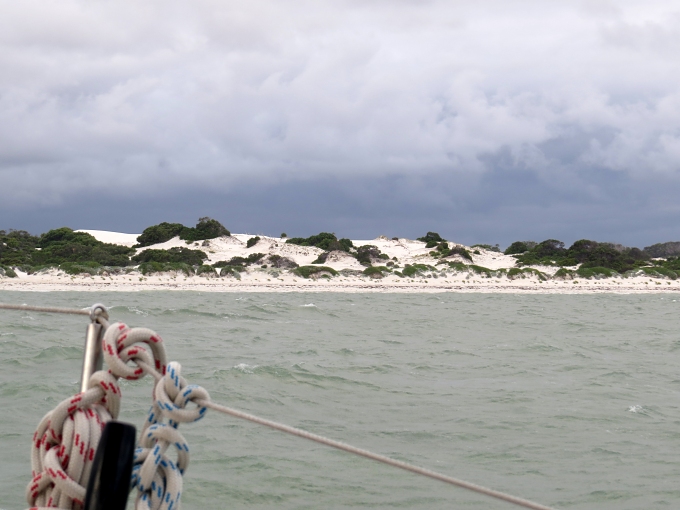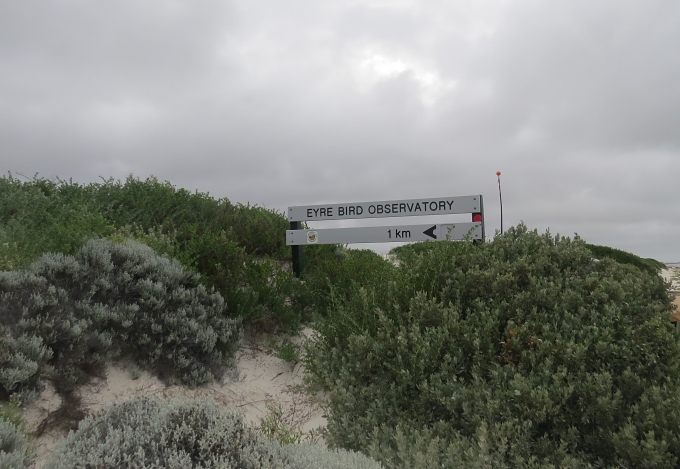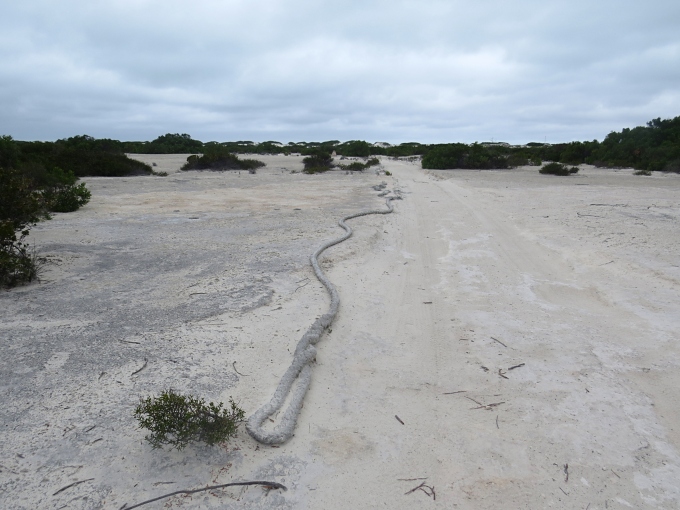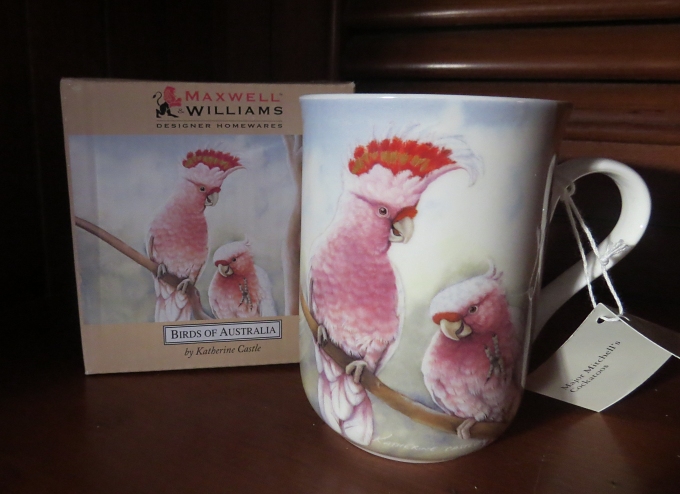Anchored at Eyre
/The passage from Eucla was a quick broad reach (170 nm) and the coordinates that Eucla Paul and Vince the cray fishermen provided were spot on. The landmark to look for on entry is the Eyre Sand Patch, a huge sand dune, noted and named by Edward John Eyre on his historical first trek across the Nullabor (story to follow) and it's hard to miss.
We were anchored just after Noon on a gloriously sunny day. We hadn't slept much on the night passage and thought we'd make sure the anchor was holding before heading ashore (read that: take a nap with the anchor alarm on). We were awakened suddenly out of anchor watch nap when we heard a loud “halloo” off the port side and a rough and crusty Vince, introduced himself, wanting to check that we'd made it in safely. Very neighborly of him. Now, of course, it seemed too late to go ashore. When you're lazy, it's easy to convince yourself that things don't need doing just now. We busied ourselves aboard for the rest of the afternoon and evening, eating, drinking, writing, watching a movie … delightful decadence in the midst of the Great Australian Bight.
Eyre (pronounced “air” and no relation to Jane at all) is not a port, but rather an anchorage that a couple of cray fisher boats call home in season and, because we're here, our home for a couple of days. It's also the location of the Eyre Bird Observatory, Australia's most most isolated research facility. The closest neighbor is the Cocklebiddy Roadhouse about 50km (30miles) away and access to the Observatory off the Eyre Highway is 29 km (~18 miles) on a 4-wheel drive road that purportedly shakes your dental fillings loose. Or … you can arrive by sea, anchor in the backyard, dinghy ashore, walk 1 km and call in for tea.
The next morning, grey and overcast, we headed to shore. The sandy beach trail led through dunes, up a narrow, 4-wheel drive road and into a small, very green valley with lots of flora and birdsong. Signs and lengths of hawser marked the way. We could see the tin roof of the Observatory nestled in the little hollow as we crested the hill.
This area has loads of historical significance and we'd feel remiss if we didn't share it with you.
In 1841, Edward John Eyre and his friend, John Baxter, accompanied by three Aborigine guides, Wylie, Joey and Yarry, set off across the arid, unknown territory called the Nullarbor Plain in a do or die effort to find a route across it. Discord, treachery, starvation, lack of water and the unrelenting environment contributed to the demise of Baxter, Joey and Yarry, and in the end, only Eyre and Wylie survived. A saving grace for Eyre was finding the Eyre Sand Patch in this very locale. With local Aborigine knowledge, a 2m well was dug through the fine white sand and yielded a source of water, saving the party from dying of thirst. You'll remember at Eucla, we saw a memorial to Eyre and here as well, a memorial with plaque honored the Eyre party and their harrowing traverse of the Nullarbor.
Gavin and Kirsty were just saying goodbye to a visiting couple when we arrived and Kirsty wasted no time in putting the kettle on for tea. They are volunteer caretakers at the Observatory and will spend three months living here full-time, overseeing the area, doing bird counts, transmitting weather data three times a day and welcoming guests among other duties.
We sat on the veranda chatting and drinking tea, while birds chirped and tweeted and fluttered by. They seemed to favor the bird baths, but I'll be darned if I managed one photo. We were waiting for a flock of Major Mitchell Cockatoos to make their usual morning entrance, but the grey skies or the company must have kept them away, because they never showed. To overcome my disappointment and help contribute to the Observatory, David bought me a fine cockatoo tea mug for my on-board tea-drinking pleasure.
More on our visit to Eyre tomorrow. In the meantime, however, we wanted to thank those of you (and there were quite a few) who shared words of wisdom, sage advice and ideas while we were figuring out our little predicament at St. Francis Island. Most said “Get the hell out of there and across the Bight, you dolts!”, but the advice came too late and we were already in Eucla by the time we received the comments. That said, as always, what seems like a calamity at the moment has a way of working itself out with time and further consideration. We are not taking this crossing lightly by any means. It's an ocean passage and the Southern Ocean at that. It's serious business, but unique and remote areas like the Eyre Bird Observatory are places we might never see otherwise and we hate to pass them up.
Also, those weird cylindrical, cigar-shaped clouds that caused us grief en route to St. Francis? Thanks to Miks in Moody, Maine (ain't that alliterative?) who informed us that these are “roll clouds” formed in advance of cold fronts. They certainly do pack a wallop.








